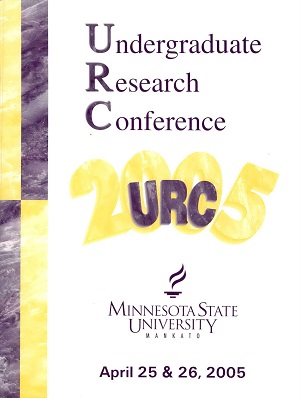Comparative Analysis of Urban Design and Criminal Behavior: A Study of New Urbanism and Defensible Space as They Pertain to Crime
Location
CSU 202
Start Date
25-4-2005 1:15 PM
End Date
25-4-2005 3:00 PM
Student's Major
Urban and Regional Studies
Student's College
Social and Behavioral Sciences
Mentor's Name
Anthony Filipovitch
Mentor's Department
Urban and Regional Studies
Mentor's College
Social and Behavioral Sciences
Description
This research evaluated the correlation between urban design and criminal behavior. Environmental designs observed were New Urbanism, also known as Traditional Neighborhood Design (TND) and Neo-Traditional Neighborhood Design; and Defensible Space, otherwise known as Crime Prevention Through Environmental Design (OPTED) or Secure by Design (SBD). This study analyzed and compared crime rates in Minnesota cities and neighborhoods which have characteristics of one of these urban designs or a 3rd, Vernacular Design. Similar research has been done in a 2004 thesis by Marie E. Hafey titled "New Urbanism Versus Defensible Space: Design Philosophies Related to Neighborhood Satisfaction and Perceived Crimef which addressed the correlation between urban design and perceived crime. A recent Operation Scorpion web posting also claimed New Urbanism is crimogenic. There is little research to either support this argument or refute it. This research aimed to find whether or not either of the two urban designs, Defensible Space or New Urbanism, is conducive to criminal behavior.
Comparative Analysis of Urban Design and Criminal Behavior: A Study of New Urbanism and Defensible Space as They Pertain to Crime
CSU 202
This research evaluated the correlation between urban design and criminal behavior. Environmental designs observed were New Urbanism, also known as Traditional Neighborhood Design (TND) and Neo-Traditional Neighborhood Design; and Defensible Space, otherwise known as Crime Prevention Through Environmental Design (OPTED) or Secure by Design (SBD). This study analyzed and compared crime rates in Minnesota cities and neighborhoods which have characteristics of one of these urban designs or a 3rd, Vernacular Design. Similar research has been done in a 2004 thesis by Marie E. Hafey titled "New Urbanism Versus Defensible Space: Design Philosophies Related to Neighborhood Satisfaction and Perceived Crimef which addressed the correlation between urban design and perceived crime. A recent Operation Scorpion web posting also claimed New Urbanism is crimogenic. There is little research to either support this argument or refute it. This research aimed to find whether or not either of the two urban designs, Defensible Space or New Urbanism, is conducive to criminal behavior.
Recommended Citation
Enger, Afton. "Comparative Analysis of Urban Design and Criminal Behavior: A Study of New Urbanism and Defensible Space as They Pertain to Crime." Undergraduate Research Symposium, Mankato, MN, April 25, 2005.
https://cornerstone.lib.mnsu.edu/urs/2005/oral-session-G/5




